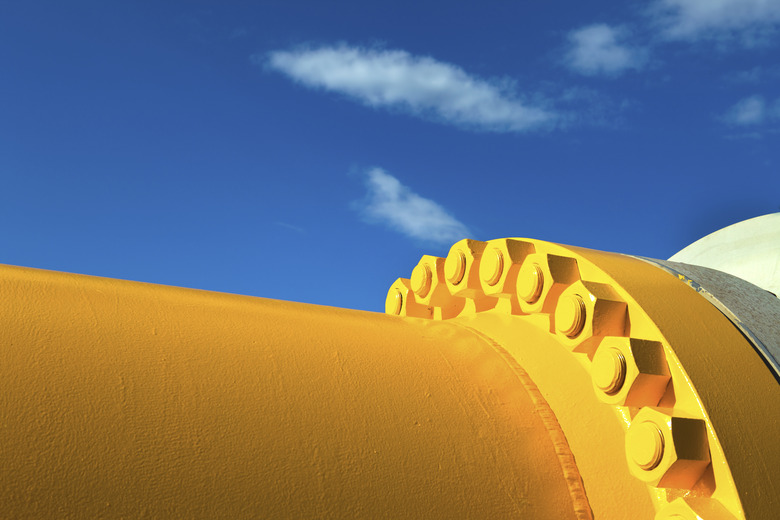Pipes carry oil from refineries to distribution points hundreds of miles away, and they also carry gas and water to individual residences in municipal service areas. No one wants these pipes to burst, so distribution companies pay close attention to the tensile strength of the pipes they use. One of the main indicators of tensile strength is Specified Minimum Yield Strength, usually shortened to SMYS. Once it has been determined for a certain material, engineers can determine the maximum allowable pressure, or hoop stress, inside a pipe with a given diameter and wall thickness.
TL;DR (Too Long; Didn’t Read)
Specified minimum yield strength (SMYS) is related to the pressure inside a pipe by Barlow’s formula: P = 2St/D, where t is the pipe thickness in inches, and D is the outside diameter, also in inches.
Barlow’s Formula
Engineers calculate the maximum allowable pressure (P) inside a pipe by using Barlow’s formula, which relates pressure to the nominal wall thickness (t), the allowable stress (S), which is the SYMS, and to the inverse of pipe diameter (D). The formula is:
P = 2St/D
The SYMS is usually a given in this formula. It has been predetermined for the pipe material in question, and you generally find it by looking it up in a table. When designing gas or oil delivery systems, codes usually require that the value for S used in the equation be 72 or 80 percent of the SYMS for the material as a safety buffer. SYMS is expressed in pounds per square inch (psi), and the length quantities are expressed in inches.
Example
A certain pipe material has an SMYS of 35,000 psi, and design considerations require reducing it to 72 percent of its value. If the pipe has an outside diameter of 8 5/8 inches and a wall thickness of 0.375 inches, what is the maximum allowable pressure inside the pipe?
P = 2St/D = 2 (35,500 psi) (0.375 in) / 8.625 in =
3,087 psig
The unit “psig” stands for ‘gauge pressure,” which is a pressure measurement that accounts for atmospheric pressure. It’s basically the same as psi.
Determining SMYS from Barlow’s Formula
Because the specified minimum yield strength has already been determined for most materials, you can usually find the value you need by consulting manufacturing literature. If you need to determine it for a material for which you can’t find the value, you would have to conduct your own pressure test and rearrange Barlow’s formula to solve for S:
S = PD / 2t
You would fill the pipe with a fluid, usually water, and increase the pressure until the pipe started to permanently deform. Record that pressure in psig, then plug it into the equation along with the pipe thickness and outside diameter to get the SMYS in pounds per square inch.

